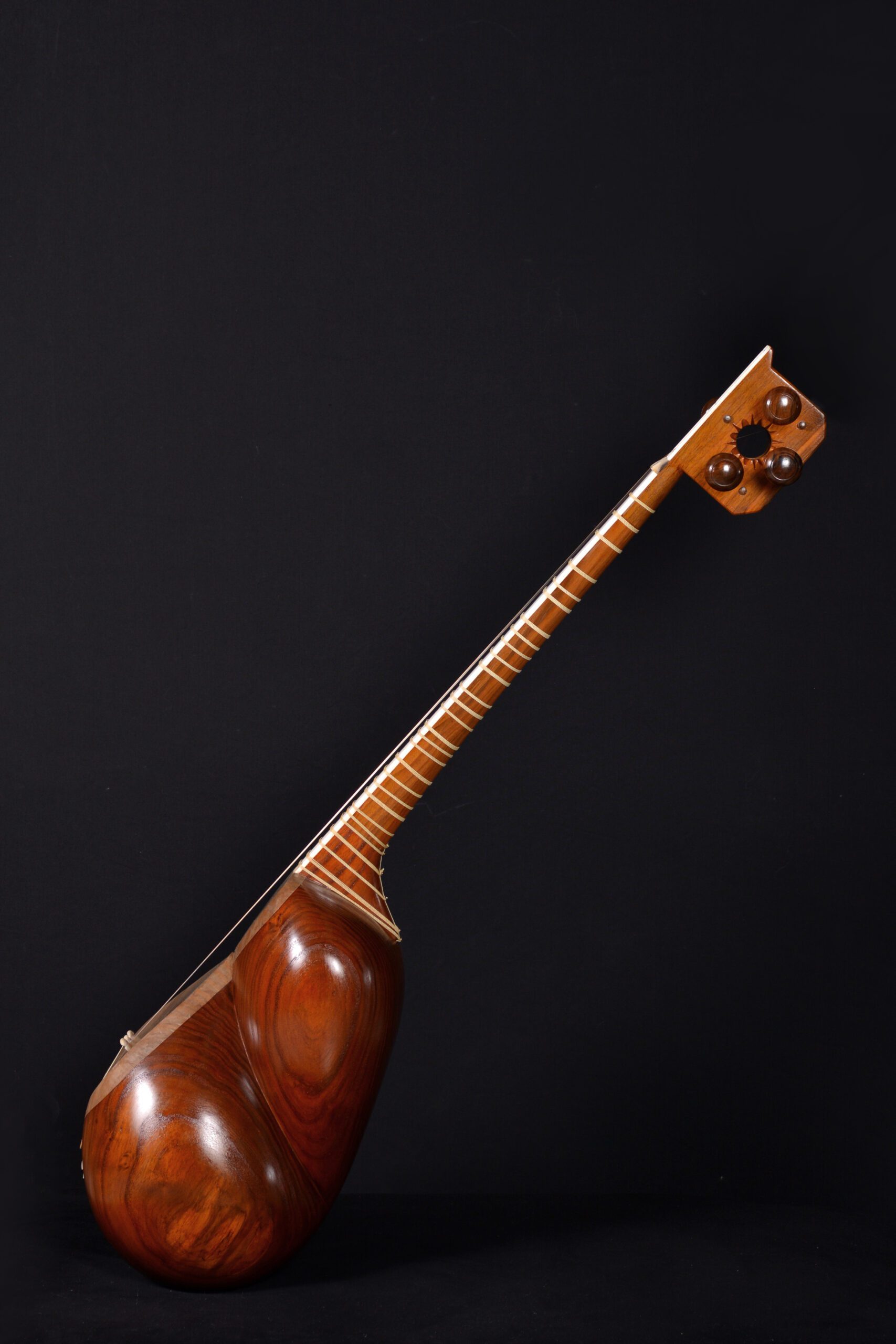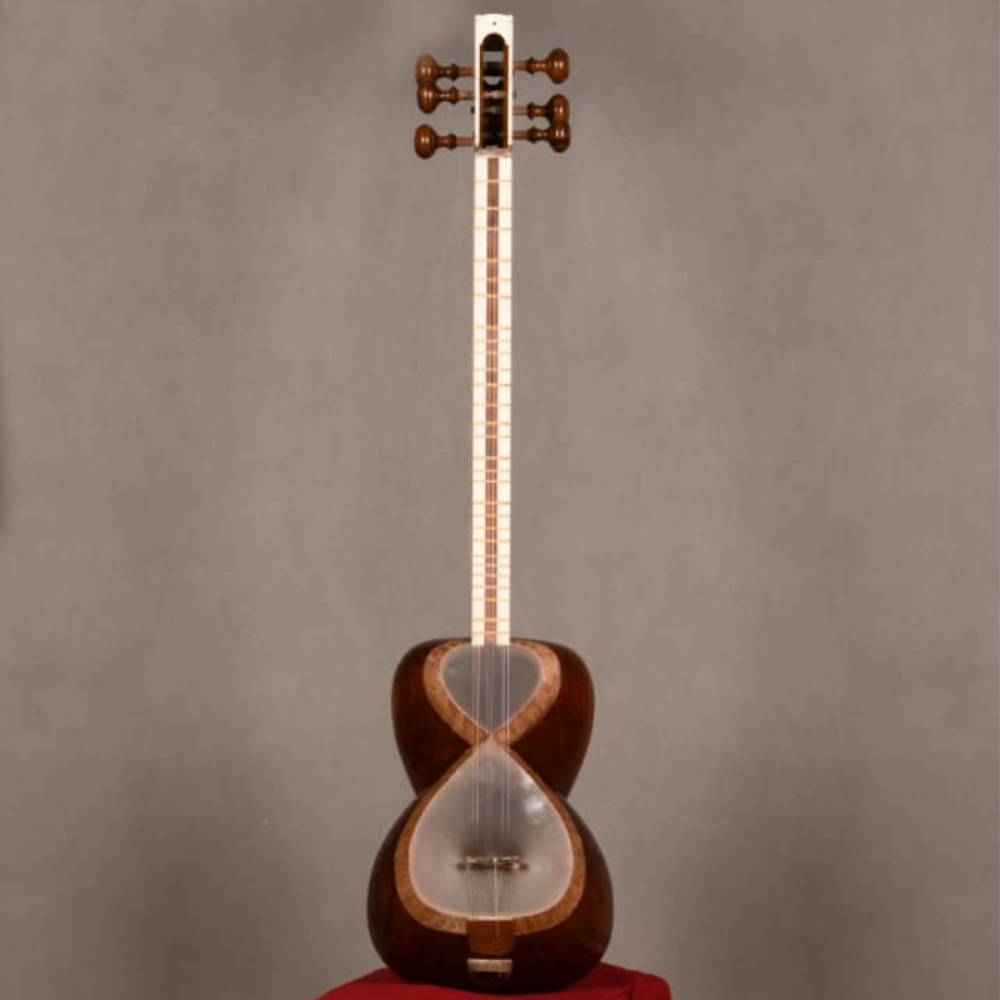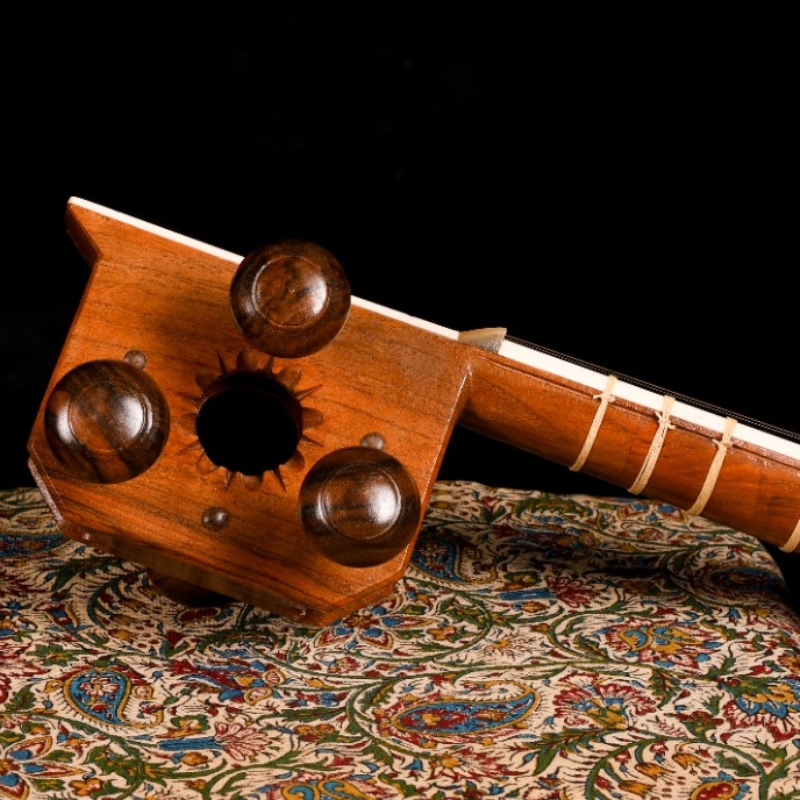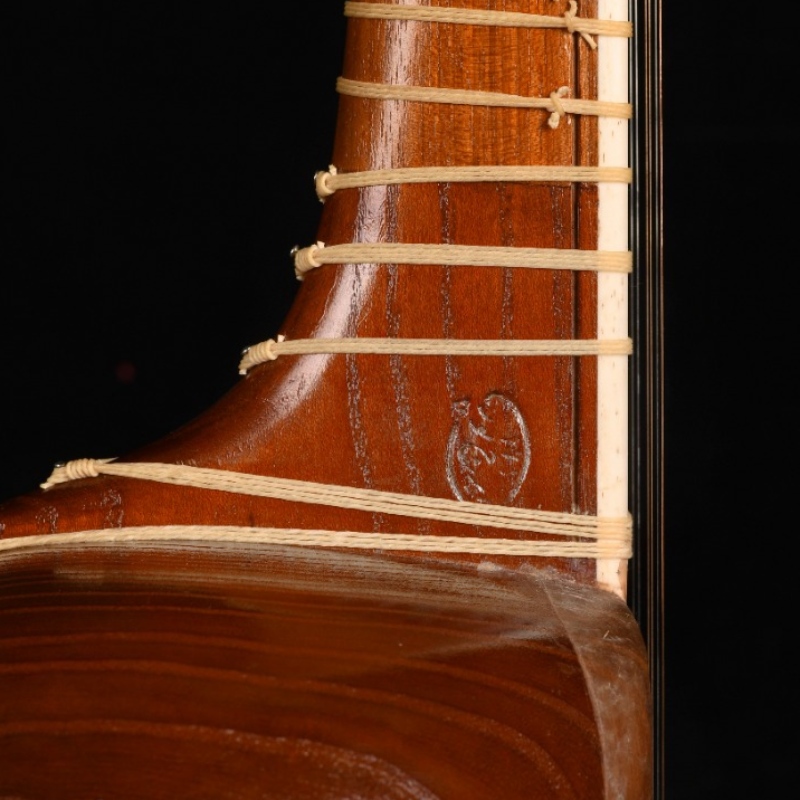
History of Tar Instrument
History of Tar Instrument
The national instrument of Iran is called “Tar”. This instrument dates back to 2000 to 3000 years, but the most beautiful image that can be cited is the feast of Shah Abbas Safavid at the Chehel-Sotoun Palace in Isfahan
Tar construction: This instrument consists of a bowl, kettledrum, neck, claw


Tar bowl: It is cut from mulberry wood. Mulberry wood is used in most instruments of the tar family such as dotar, setar, and tanbur because of the favorable sound it produces.
“Tar” neck: The tar neck is generally made from walnut wood and its cutting has a special trick so that after narrowing and leveling, the neck does not move or twist
Claw: The claw is also made of walnut wood, which consists of a total of 5 pieces of wood.
Camel bone: After cleaning, the camel’s bone is cut with a chainsaw (like a tree trunk).
They are then turned into thin lumber and soaked in lime water for 3 to 5 weeks to remove the fat and turn white, and then polished and brought to the workshop for use.
Aries ram horn: The tar bridge, saddle, and nut are made of ram horn. The reason is the more acceptable sound that the ancient composers and musicians had achieved. After cutting the ram horn laterally, it is cut to a size of 6 cm, and each of the pieces is used in proportion to the thickness of the horn to make the tar bridge, saddle, and nut. Skin of ewe lamb during pregnancy: Skin of the pregnant ewe lambs that are unknowingly slaughtered is tanned. One should be careful in doing so, since this skin is so thin that it is torn with a little carelessness.
Tar frets: For frets on the tar, setar, and dotar necks, the tanned intestines of lambs (cord twisted) are used in such a way that the intestines of sheep are cleaned and degreased in the cord-twisting workshop to form thin threads. They are tied in two or three strings according to the required orders.






